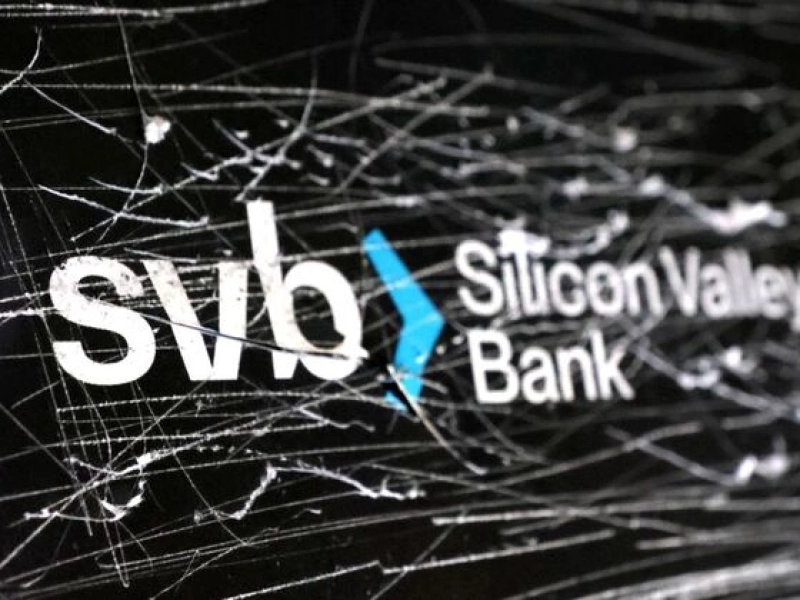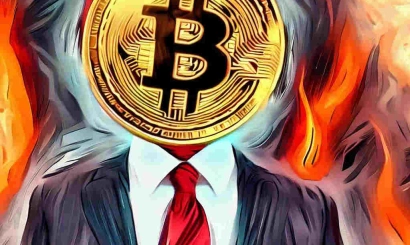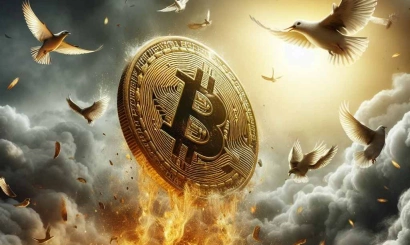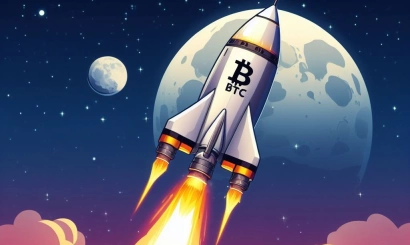"There's also the panic factor." How the collapse of SVB Bank affected the crypto market
The bankruptcy of the U.S. Silicon Valley Bank led to the cryptocurrency counterpart of the dollar becoming detached from its parent currency. What are the implications for the market going forward?
Silicon Valley Bank (SVB) went bankrupt in the U.S., making it the second biggest bank collapse in the country's history based on asset values. The event also resonated in the cryptocurrency market: the bank's services were used by major industry players, and the bank itself was considered loyal to crypto-asset companies.
After the news of the bank's closure, the USD Coin Stablecoin (USDC) lost its peg to the U.S. dollar exchange rate. This is an anomalous event for the market, because the rate of this and other "stablecoins" is not subject to volatility, and they themselves act as digital counterparts of the U.S. dollar on cryptocurrency exchanges and in settlements between cryptocurrency owners. Their reserves are backed by real assets - fiat currencies, securities, precious metals, etc. When new stablecoins are issued, the issuer deposits collateral into the account of a partner bank, and when stablecoins are "redeemed," their owner, accordingly, transfers them into traditional money - usually U.S. dollars.
The second largest market capitalization USDC stablecoin is issued by Circle in partnership with Coinbase, a cryptocurrency exchange. SVB's bank accounts ended up with $3.3 billion of Circle's funds locked up to secure the USDC token. This amounted to about 8% of the asset's total collateral of almost $40 billion. USDC momentarily fell to $0.86, but after the announcement of support measures by Circle and regulators, its rate recovered and is at $1 at the time of publication.
On the night of March 13 the U.S. government promised to fully compensate the deposits of collapsed SVB bank, but at the same time, the authorities announced about the closure of Signature Bank. This bank, like the previously liquidated Silvergate, was considered open to crypto-business and provided a channel for converting cryptocurrencies into customary currencies using its own solution called Signet.
This service was also used by Circle. Head of the company Jeremy Allaire later reported that Circle partnered with another cryptocurrency-focused bank, Cross River Bank.
Less-capitalized "stable currencies" such as DAI or FRAX have also been affected, some of which have also temporarily lost parity with the U.S. dollar due to the fact that much of their reserves were backed by USDC. The largest of the stablecoins, USDT from Tether, was not affected, and Tether representatives have publicly stated that they were not affected by the problems of the collapsed banks.
"I assess the situation with the closure of classic banks serving crypto startups as a negative, but a not critical event for the crypto industry," commented cryptocurrency market analyst Viktor Pershikov. - This kind of impact cannot be compared to a more negative event in the form of the collapse of the FTX exchange and, in fact, affects only a few players of the crypto market, in particular Circle, partially serviced by these loyal to the crypto-business banks".
Dollars are gone from the crypto market. Who will replace Silvergate Bank
Both SVB and Signature came to collapse, albeit extremely unexpectedly, but it was not a surprise to the cryptocurrency industry, Pershikov believes. Already since the middle of last year, some market participants have abandoned dollar transactions. Binance, for example, stopped servicing fiat transfers through these banks sometimes before they collapsed.
"To speak of this as a black swan for the cryptocurrency industry, I would not. I believe that the industry will be able to find an alternative to work with dollars fairly quickly: the willingness to work with crypto projects has already been expressed by BCB Group, Mercury, and other financial companies," the expert notes.
Why USDC Stablecoin is detached from the dollar
Circle, as the issuer of USDC, in this situation was affected by the negative news background in the media and the accompanying info field, explains the crypto-expert and author of the telegram channel GFiS Channel Taisia Romanova. By itself, the number of blocked funds in SVB was only $3.3 billion (out of $40 billion). After it was confirmed that Circle had previously held funds in both the first of the collapsed "cryptocurrency" banks, Silvergate and SVB, a massive withdrawal of deposits from Circle itself began. This led to about $2.7 billion being withdrawn from Stablecoin in just 24 hours on March 10.
Taking into account the fact that Circle had less than 25% in fiat money, the outflow could become avalanche-like and critical. The company temporarily (for the so-called bank weekend) closed the gateways of conversion from USDC to the dollar, including through the Coinbase exchange. This led to an increase in the number of stackcoin holders wishing to withdraw into USDC, who tried to do so through other trading pairs or liquidity pools in decentralized exchanges. That's what caused the USDC to be detached from the dollar exchange rate, Romanova says. There is not much liquidity in such pairs on traditional exchanges, and their market makers cannot maintain the spread at a loss. Centralized stablecoins, unlike algorithmic ones, have no direct financial correlation between their actual collateral reserves and the "rate in the glass" on exchanges.
Circle said that the situation is under control and the company is ready to replenish the missing funds with external financing. This has partially calmed the market, and the USDC's peg to the exchange rate has begun to recover. The problem of maintaining the current amount of reserves is quite solvable, especially taking into account the fact that BlackRock has been the manager of their reserve fund since November 2022. But there is also the panic factor in the market, which unfortunately the company has no control over.
"Circle finds itself in an almost dead-end situation: if they need to open a withdrawal during business hours, those wanting to exit USDC into fiat will continue to empty their liquid reserve pool (about $5.4 billion). If they don't open a withdrawal, the panic can escalate again and the USDC will once again become more detached from the exchange rate. But rather fortunately for the company came out the statements from the U.S. Federal Reserve that, firstly, the banking system will be helped, and secondly, Signature bank, through which the transactional calculations of the withdrawal from USDC into fiat, will also be closed. This effectively relieved Circle of the responsibility for making the tough decision," Romanova describes what's happening.
Jeremy Allaire has already announced a new partner for the gateway to fiat, which is Cross River Bank, and USDC's peg to the dollar has almost been restored. If there is no artificially created panic in the near future, nothing will threaten the fate of stablecoin, the expert believes.
"I believe that the situation with USDC will stabilize in the near future and the peg will be preserved, as the U.S. government has already announced assistance to customers of collapsed banks," Pershikov agrees, adding that the USDC's decoupling from the dollar rate was further influenced by active hedge fund sales of the stablcoin in the expectation of its further fall in pairs to the dollar and other stablecoins. Also, there were "technological features of the project," which was not ready to fulfill obligations at hours that are not working for the U.S. banking industry, "which is nonsense to the industry," the expert said.
In his opinion, such events can happen to any stablecoin. But in this case, the problems of USDC came not from the industry and not because of the collapse of the cryptocurrency market, but because of the specifics of the Circle business, tied to the real sector of the American economy - banks and financial companies.
According to Pershikov's observations, the situation with the USDC's decoupling from the dollar was successfully exploited by cryptocurrency funds that work with Stablecoin. Some players bought unbound USDC with the expectation of restoring the peg and made 10 to 15% on such deals in a short period of time.
- Cryptocurrency lender Hodlnaut began talks to sell after losing $190 million
- "Penalties will definitely continue": what else the SEC will punish the cryptocurrency market
- What happened to cryptocurrencies in February
- Sandbox meta-universe developers report the leak of personal user data
- USDC Stablecoins worth $1.7 billion was withdrawn from circulation in one day on March 13
- Redefining the NFT Market: How Blur Changed the Game
- More than 30 global brands will participate in Metaverse Fashion Week






